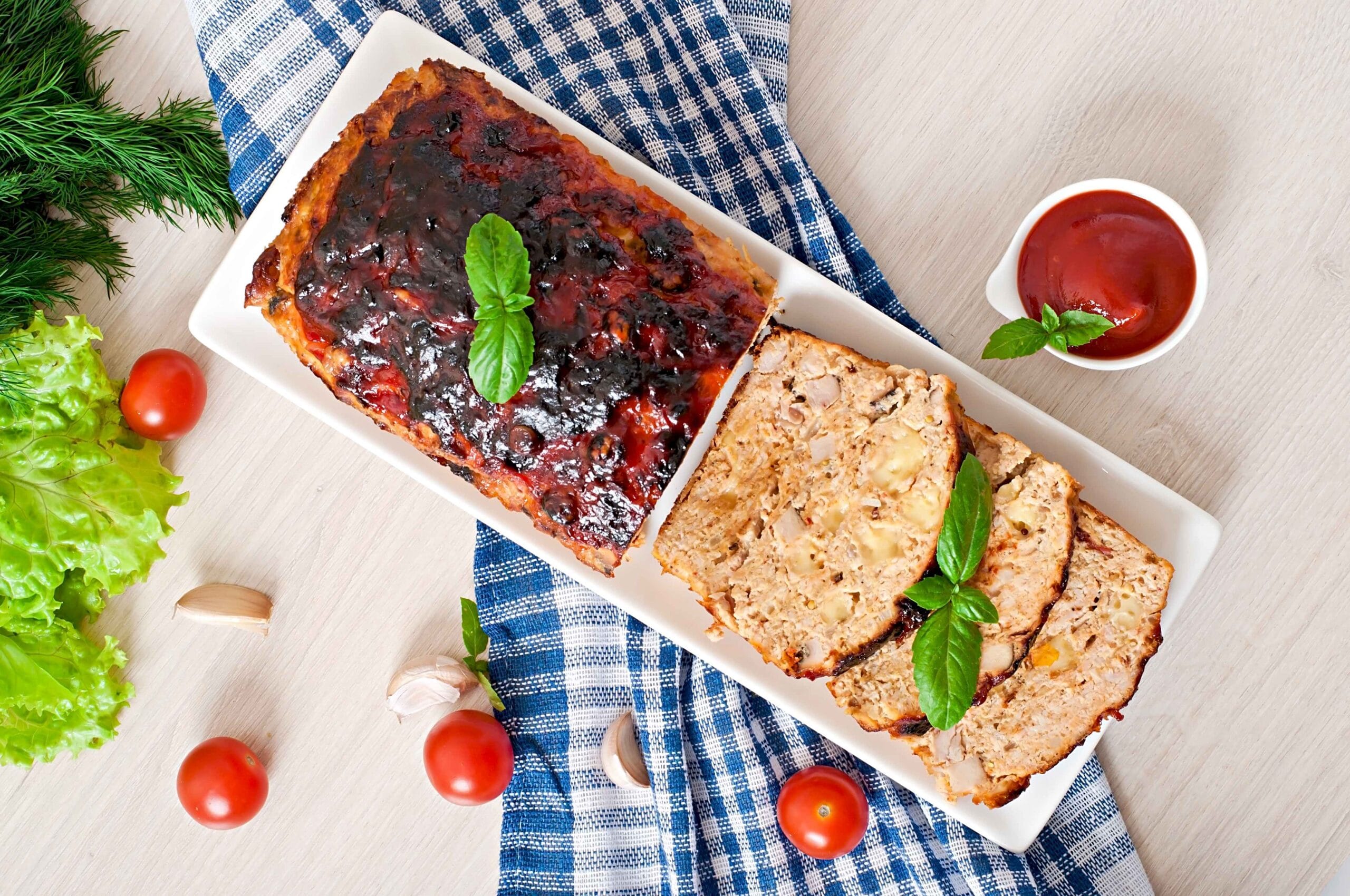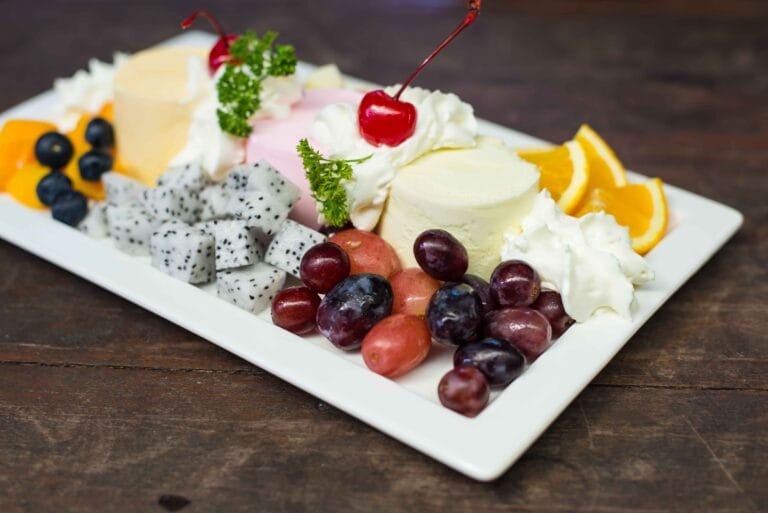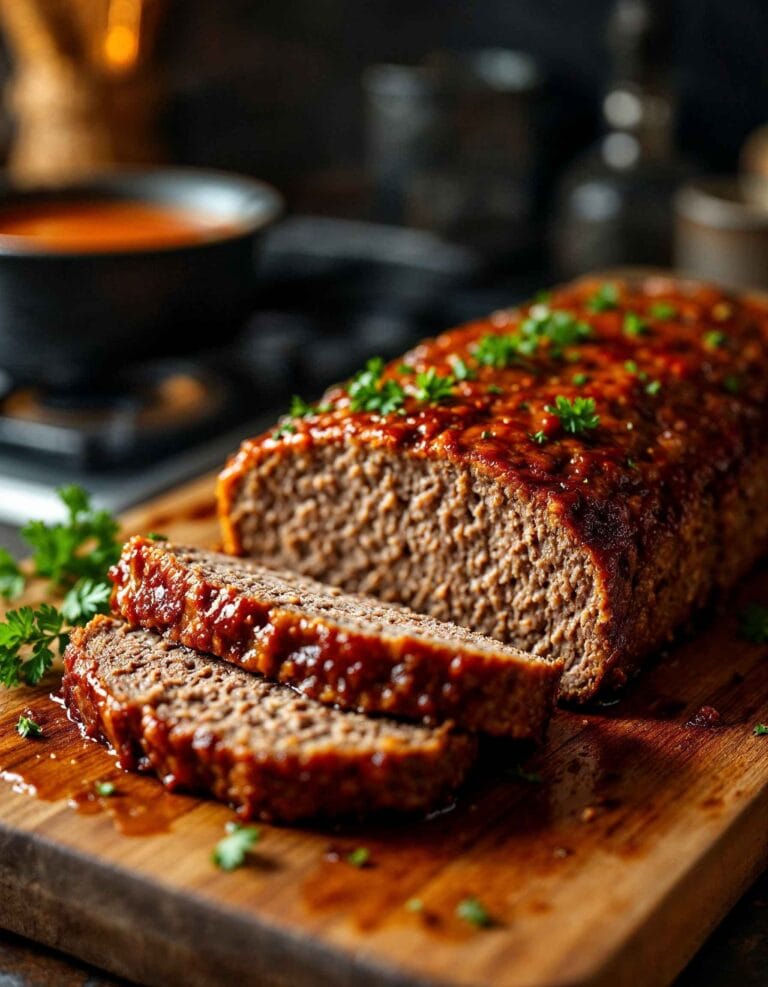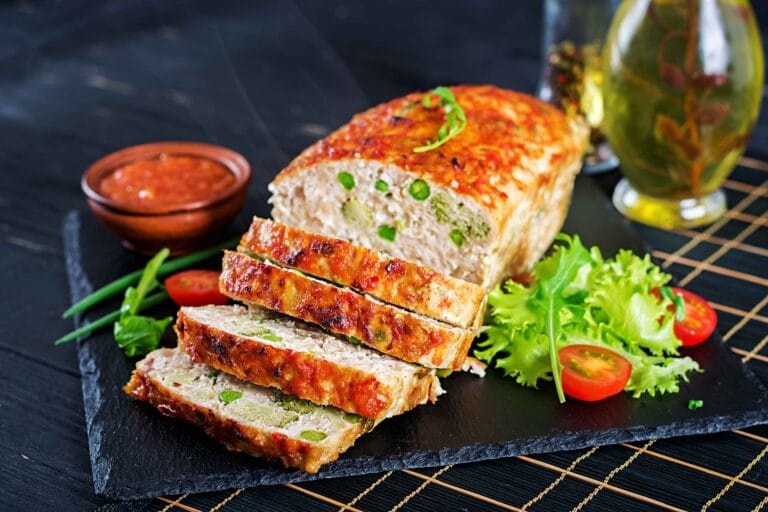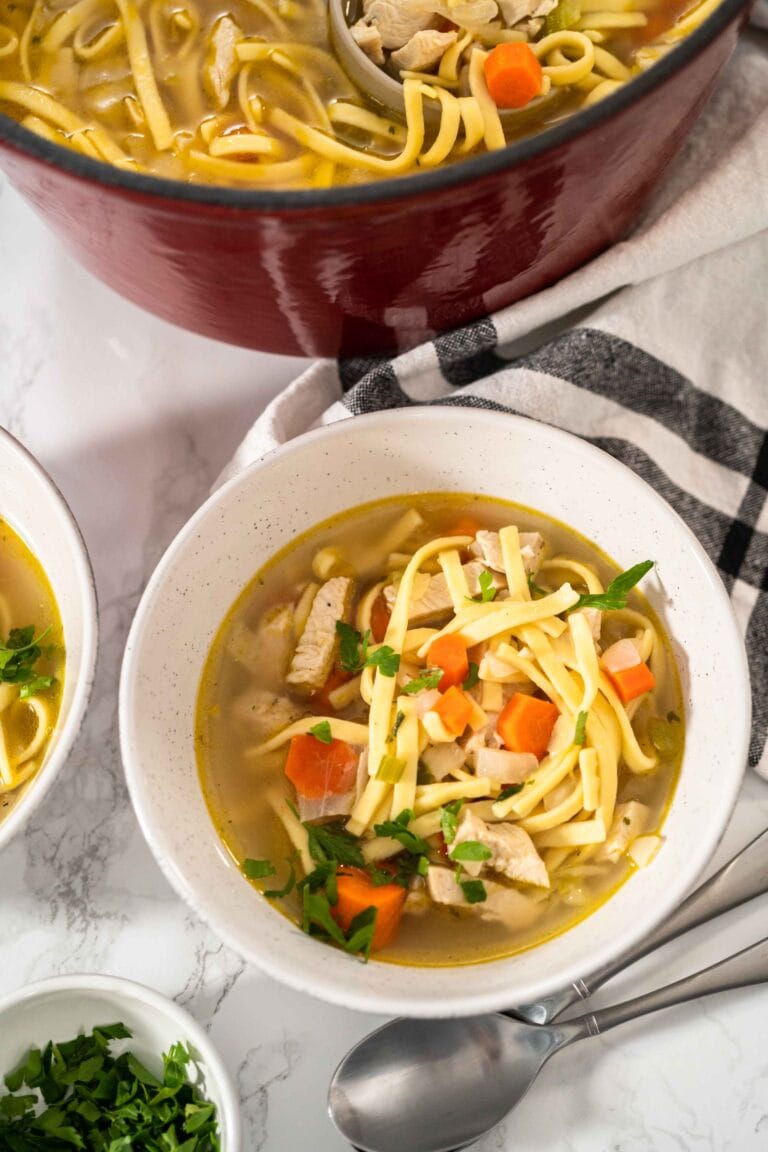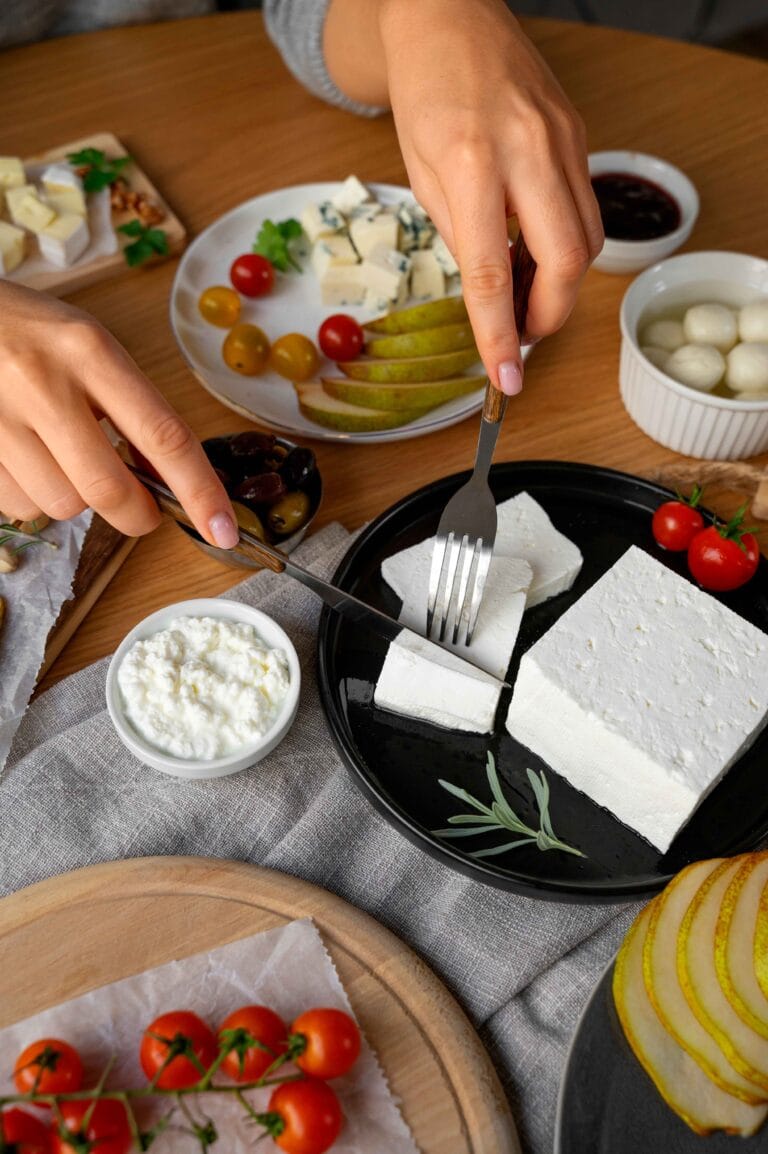Why Milk Instead of Water in Meatloaf: The Secret to Moist and Flavorful Meatloaf
When crafting the perfect meatloaf, every ingredient plays a vital role, and the choice of liquid is no exception. Milk is a popular choice for its ability to enhance texture, flavor, and moisture, while water is a more neutral alternative. But why does milk often take precedence?
This article delves into the science and culinary benefits of using milk instead of water in meatloaf, helping you understand why this choice can transform a simple recipe into a savory masterpiece.
Learn how to make a classic Lipton Onion Soup Meatloaf for timeless comfort food delight.
Why the Liquid in Meatloaf Matters
The liquid in meatloaf is more than just a filler—it serves as the backbone for moisture, flavor, and binding. Without the right liquid, meatloaf can turn out dry, crumbly, and less satisfying. Choosing the correct liquid ensures a balance of juiciness and cohesion.
Milk vs. Water: The Essential Question
While water is accessible and commonly used in many recipes, it lacks the depth of flavor and textural benefits that milk brings to meatloaf. Understanding the difference between these liquids can help you make informed culinary decisions for your meatloaf recipes.
Quick Overview of Benefits of Using Milk
- Moisture Retention: Milk helps to lock in moisture, preventing the meatloaf from drying out.
- Flavor Enhancement: The natural fats and sugars in milk add subtle sweetness and richness.
- Improved Texture: Milk binds with breadcrumbs to create a soft, tender interior.
- Nutritional Boost: Milk contributes essential nutrients like calcium and proteins.
The Science of Meatloaf
Meatloaf might seem like a straightforward dish, but its success depends on a delicate balance of ingredients. Liquids play a crucial role in ensuring the texture, flavor, and structure are just right.
Role of Liquids in Meatloaf
The liquid in meatloaf serves three primary purposes:
- Binding Ingredients: Liquids combine with breadcrumbs, oats, or other fillers to bind the mixture, preventing the meatloaf from falling apart.
- Adding Moisture: Meat, even with its natural juices, can dry out during the cooking process. Liquids keep the meatloaf tender and juicy.
- Flavor Infusion: Depending on the liquid used, it can contribute significantly to the overall taste.
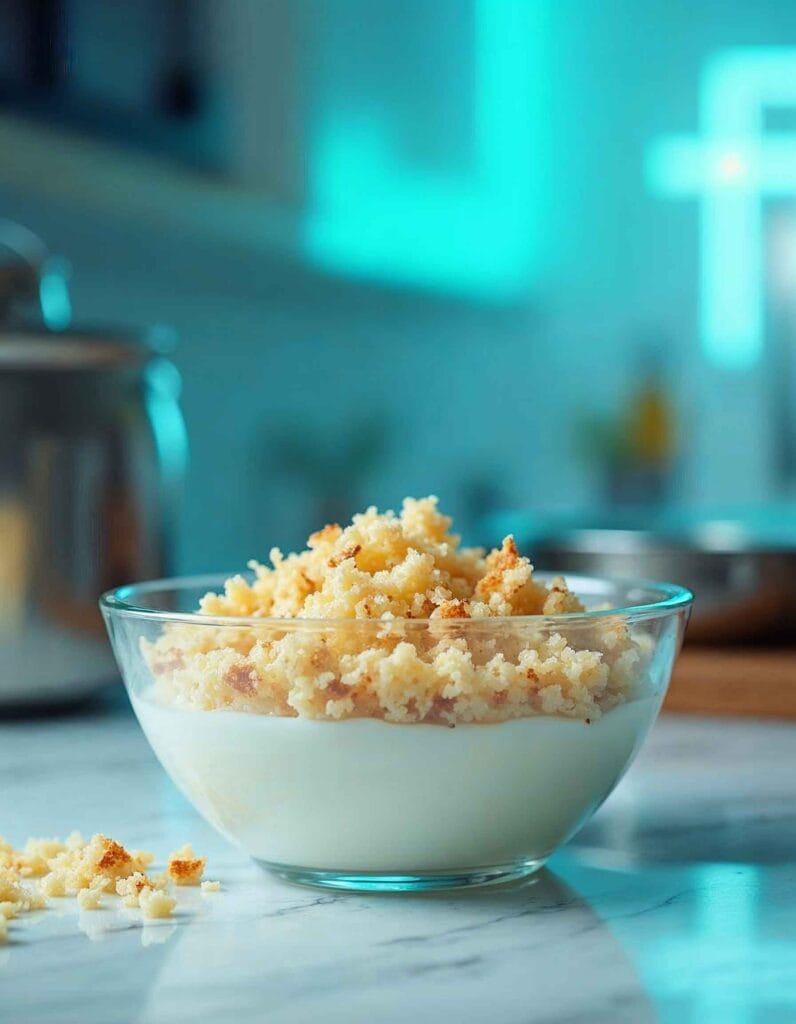
Discover the secret to juicy meatloaf with expert tips and techniques.
Why Moisture is Crucial for Texture
A dry meatloaf is a common pitfall for home cooks. Without adequate moisture, the meatloaf can become dense, crumbly, and unappealing. Liquids like milk or water hydrate the breadcrumbs, creating a matrix that holds the loaf together and keeps it soft.
Milk stands out because it not only hydrates but also imparts creaminess. This creamy texture is key to achieving the perfect “melt-in-your-mouth” bite.
Milk as a Culinary Enhancer
Milk contains natural fats, proteins, and sugars, which make it a standout choice for meatloaf. Here’s how these components work:
- Fats: These provide richness and help distribute flavors evenly.
- Proteins: Proteins in milk create a tender crumb structure, especially when combined with fillers like breadcrumbs.
- Lactose: The natural sugar in milk enhances the savory flavors in the meatloaf without overpowering them.
Unlike water, which merely hydrates, milk actively contributes to the overall flavor and texture, making it an essential ingredient in many traditional meatloaf recipes.
Milk’s Unique Properties
Milk isn’t just a random substitute for water; it brings specific qualities to meatloaf that elevate the dish’s taste and texture. Let’s explore these unique attributes in detail.
Richness from Natural Fats and Proteins
One of the reasons milk is favored in meatloaf recipes is its balance of fats and proteins. These elements have a profound impact on the final product:
- Fats in Milk: These add a velvety richness to the meatloaf, making it more indulgent and flavorful. The fat also helps to lubricate the meat, preventing it from becoming overly dense.
- Proteins in Milk: Milk proteins interact with the starches in breadcrumbs to create a tender and cohesive texture. This ensures the meatloaf stays intact yet remains soft.
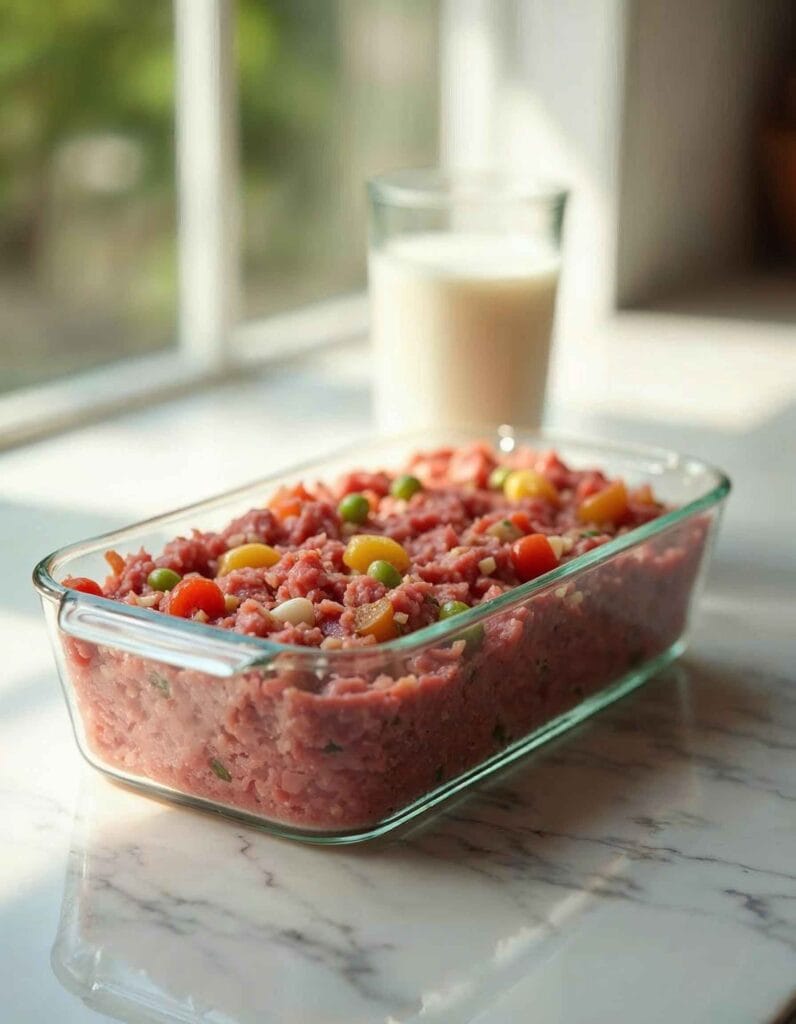
Contribution to Tenderness
Milk’s ability to create tenderness stems from its emulsifying properties. When mixed with breadcrumbs or other binders, milk forms a paste-like consistency. This paste:
- Coats the meat evenly.
- Fills gaps within the mixture, preventing air pockets that can lead to uneven cooking.
- Retains moisture throughout the baking process, resulting in a juicy interior.
How Milk Interacts with Breadcrumbs
Breadcrumbs are a staple ingredient in meatloaf, acting as both a filler and a binder. Milk enhances their functionality in several ways:
- Softens Breadcrumbs: When soaked in milk, breadcrumbs swell and absorb liquid, creating a softer texture. This is crucial for avoiding a grainy or dry consistency in the meatloaf.
- Evenly Distributes Moisture: The milk-soaked breadcrumbs ensure that every bite of the meatloaf is consistently moist.
- Enhances Flavor Absorption: Milk allows breadcrumbs to better absorb seasonings and spices, intensifying the overall taste profile.
Nutritional Contributions of Milk
In addition to its culinary benefits, milk offers a nutritional boost to meatloaf. It contains:
- Calcium: Supports bone health.
- Vitamin D: Essential for calcium absorption.
- Proteins: Aid in muscle repair and growth.
This makes milk not only a flavorful addition but also a healthier one, especially when compared to water, which provides no added nutrients.
Comparing Water and Milk
The choice between milk and water in meatloaf often comes down to what you have on hand or personal preference. However, understanding the benefits of each can help you make the best decision for your recipe.
Benefits of Using Water
Water is the simplest and most readily available liquid. Here are some reasons why it might be used:
- Accessibility: Almost everyone has water on hand, making it a convenient choice.
- Neutral Flavor: Water won’t interfere with the flavors of the spices, meat, or other ingredients.
- Low Cost: Water is cost-effective, making it an economical option for budget-friendly cooking.
Despite these benefits, water lacks the richness and complexity that milk brings to the table.
Key Advantages of Milk Over Water
Milk has distinct advantages over water when it comes to creating an exceptional meatloaf:
- Flavor Enhancement: Milk’s natural sugars and fats add depth to the flavor profile, complementing the savory elements of the meat and spices.
- Improved Texture: The fats and proteins in milk create a creamier and more cohesive texture, ensuring the meatloaf isn’t dry or crumbly.
- Nutritional Value: Unlike water, milk contributes valuable nutrients, including calcium and vitamin D, making the dish more wholesome.
Using water might yield a decent meatloaf, but milk transforms it into a flavorful and tender dish that feels more indulgent and satisfying.
Why Not Use Other Liquids?
Some home cooks experiment with other liquids like broth, cream, or plant-based milk. Here’s how they compare:
- Broth: Adds savory flavor but can be overly salty and may lack the creaminess of milk.
- Heavy Cream: Provides richness but can be too dense and overpowering, leading to a greasy texture.
- Plant-Based Milk: A good alternative for those who are lactose intolerant or vegan, though some varieties (like almond milk) may alter the flavor profile.
While these alternatives have their uses, traditional cow’s milk strikes the perfect balance of flavor, texture, and moisture for most meatloaf recipes.
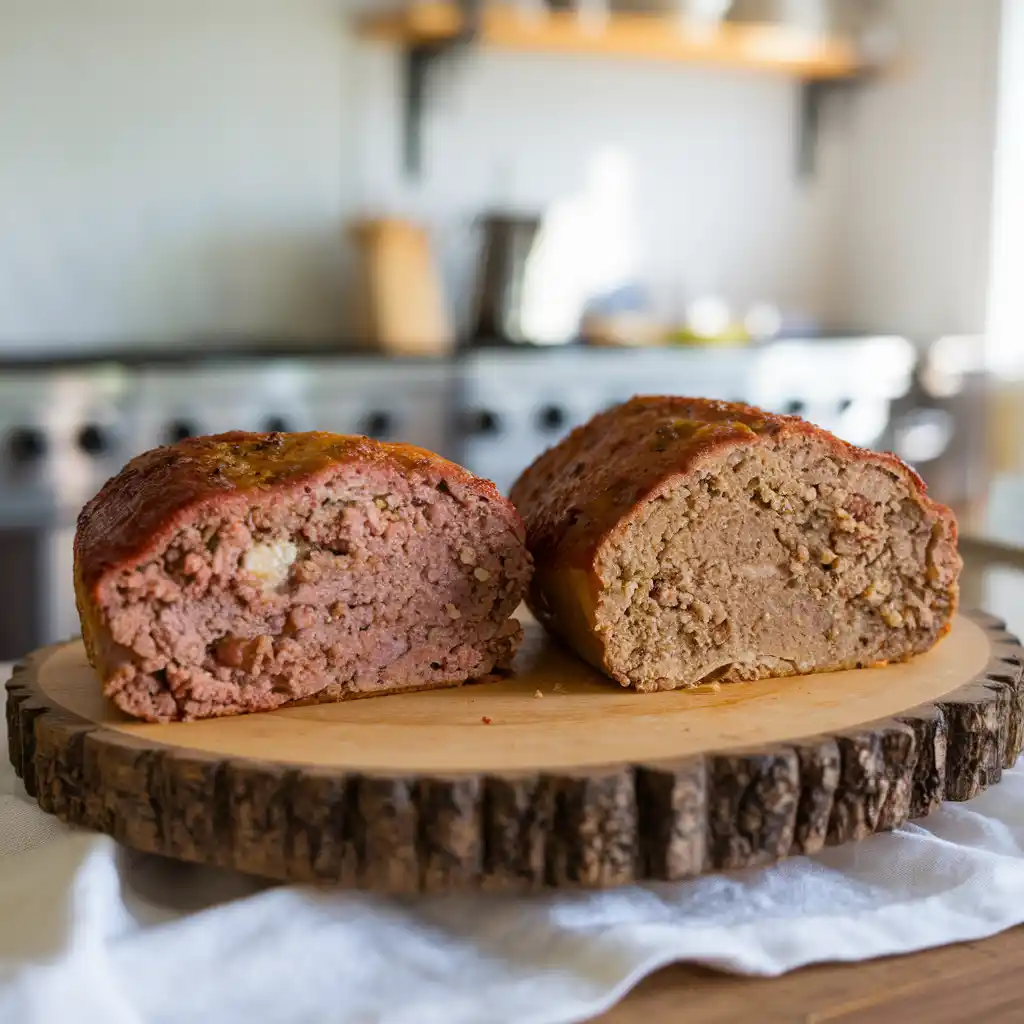
Tips for Using Milk in Meatloaf
To maximize the benefits of using milk in meatloaf, it’s essential to follow certain tips and best practices. These ensure the dish is moist, flavorful, and perfectly textured.
Substitutes for Milk (Non-Dairy Alternatives)
For those who are lactose intolerant, vegan, or simply out of milk, there are several alternatives:
- Unsweetened Almond Milk: A neutral flavor works best. Avoid flavored or sweetened versions, as they can alter the taste.
- Coconut Milk: Adds a subtle sweetness that complements certain recipes. Use sparingly to avoid overpowering the dish.
- Oat Milk: A creamy alternative with a texture similar to dairy milk. Ideal for maintaining the meatloaf’s consistency.
- Soy Milk: High in protein, this alternative mimics the binding properties of cow’s milk effectively.
Each substitute should be used in the same quantity as regular milk, though some experimentation may be needed to adjust the flavors.
Ensuring Perfect Ratios
The ratio of milk to breadcrumbs is crucial for achieving the right texture. A general guideline is:
- 1/2 cup of milk per pound of meat.
- 1/2 cup of breadcrumbs per pound of meat.
This ensures the breadcrumbs absorb enough liquid to bind the meatloaf without making it soggy or overly dense.
Common Mistakes to Avoid
Even with milk as the chosen liquid, there are pitfalls to watch out for:
- Overmixing: Stirring the mixture too much can break down the meat fibers, leading to a tough texture.
- Too Little Liquid: Skimping on milk can result in a dry meatloaf. Always measure carefully.
- Wrong Breadcrumbs: Using overly coarse or stale breadcrumbs can make the meatloaf gritty. Opt for fine, fresh breadcrumbs for the best results.
- Skipping Soaking Time: Let breadcrumbs soak in milk for 5-10 minutes before mixing. This ensures they fully hydrate and create a smoother texture.
Enhancing Flavor with Additions
For an even richer taste, consider adding these ingredients to your milk mixture before combining:
- Minced garlic or onion powder for depth.
- Fresh herbs like parsley or thyme for a burst of freshness.
- Parmesan cheese for added umami.
These small adjustments can make a big difference in the final flavor of the dish.
FAQs
Why do people add milk to meatloaf?
Milk is added to meatloaf primarily to enhance its moisture, flavor, and texture. When mixed with breadcrumbs, milk hydrates them, creating a soft and cohesive mixture that binds the meat together. Additionally, milk’s natural fats and proteins contribute to a tender and creamy texture, making the meatloaf more enjoyable to eat. It also subtly enhances the savory flavors of the meat and spices, creating a well-rounded taste profile.
What is the secret to a great meatloaf?
The secret to a great meatloaf lies in achieving the perfect balance of ingredients and techniques. Here are some key tips:
- Use the Right Ratio: Ensure the correct balance of meat, breadcrumbs, and milk for a moist and tender texture.
- Don’t Overmix: Mix the ingredients just until combined to avoid a dense or tough loaf.
- Add Flavor Layers: Incorporate seasonings, herbs, and even cheese to create depth of flavor.
- Use a Glaze: A tangy or sweet glaze adds a finishing touch that elevates the overall taste.
- Cook Evenly: Bake the meatloaf in a loaf pan or shape it evenly to ensure consistent cooking.
Learn the pros and cons of cooking meatloaf at different temperatures in this meatloaf cooking temperature guide.
Can you use water instead of milk in meatloaf?
Yes, water can be used instead of milk in meatloaf, but the results will not be as rich or flavorful. Water provides hydration but lacks the natural fats and proteins found in milk, which contribute to the meatloaf’s creamy texture and enhanced taste. If you’re substituting water, consider adding a tablespoon of melted butter or a splash of broth to compensate for the loss of richness.
What ingredient keeps meatloaf from falling apart?
The ingredients responsible for binding meatloaf and keeping it from falling apart are:
- Breadcrumbs: These absorb the liquid and create a structure that holds the meat together.
- Eggs: Their proteins act as a binder, ensuring the meatloaf stays intact.
- Milk: By hydrating the breadcrumbs, milk creates a paste-like consistency that strengthens the loaf’s structure.
Using the right combination of these ingredients is essential for a cohesive, sliceable meatloaf.
Conclusion
Milk plays an indispensable role in elevating the humble meatloaf to a flavorful and satisfying dish. Its unique properties—moisture retention, flavor enhancement, and texture improvement—make it the preferred liquid over water. By hydrating breadcrumbs, contributing natural fats and proteins, and enriching the overall taste, milk transforms meatloaf into a comforting and delicious meal.
Whether you’re using traditional milk or exploring non-dairy alternatives, understanding its importance helps you create a meatloaf that’s tender, juicy, and packed with flavor. Experiment with ingredients, ratios, and techniques to discover your perfect version of this classic dish.

